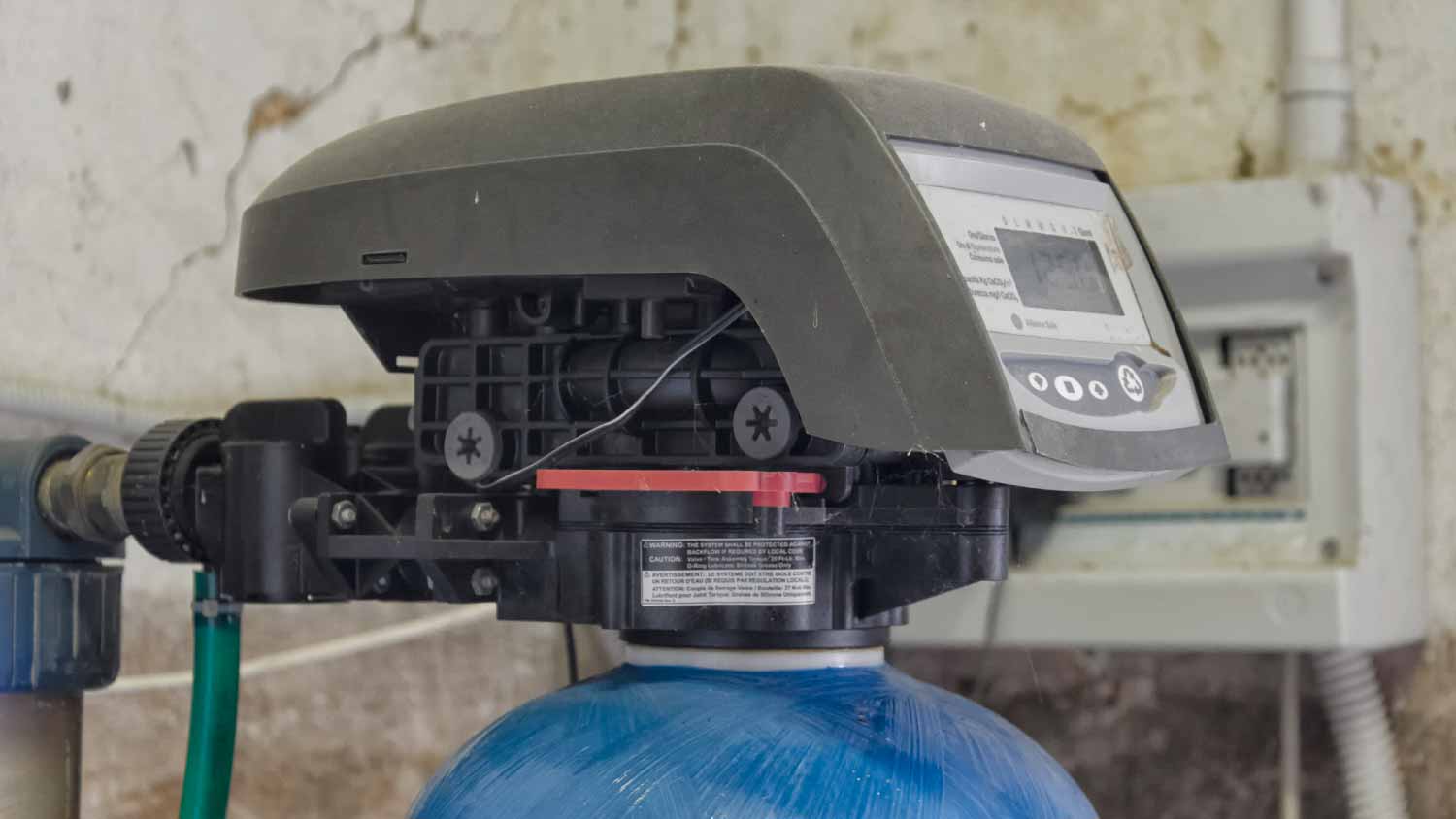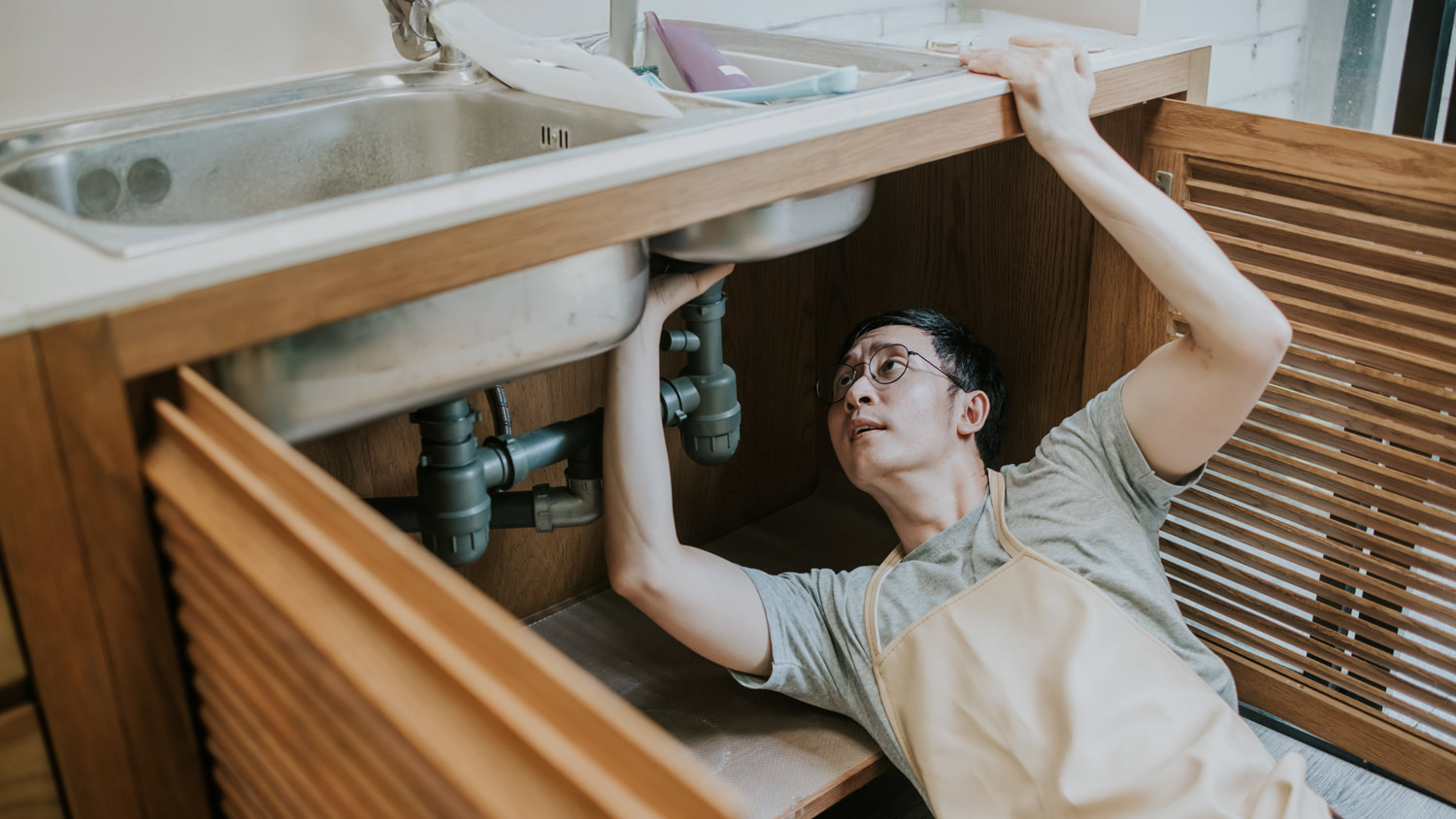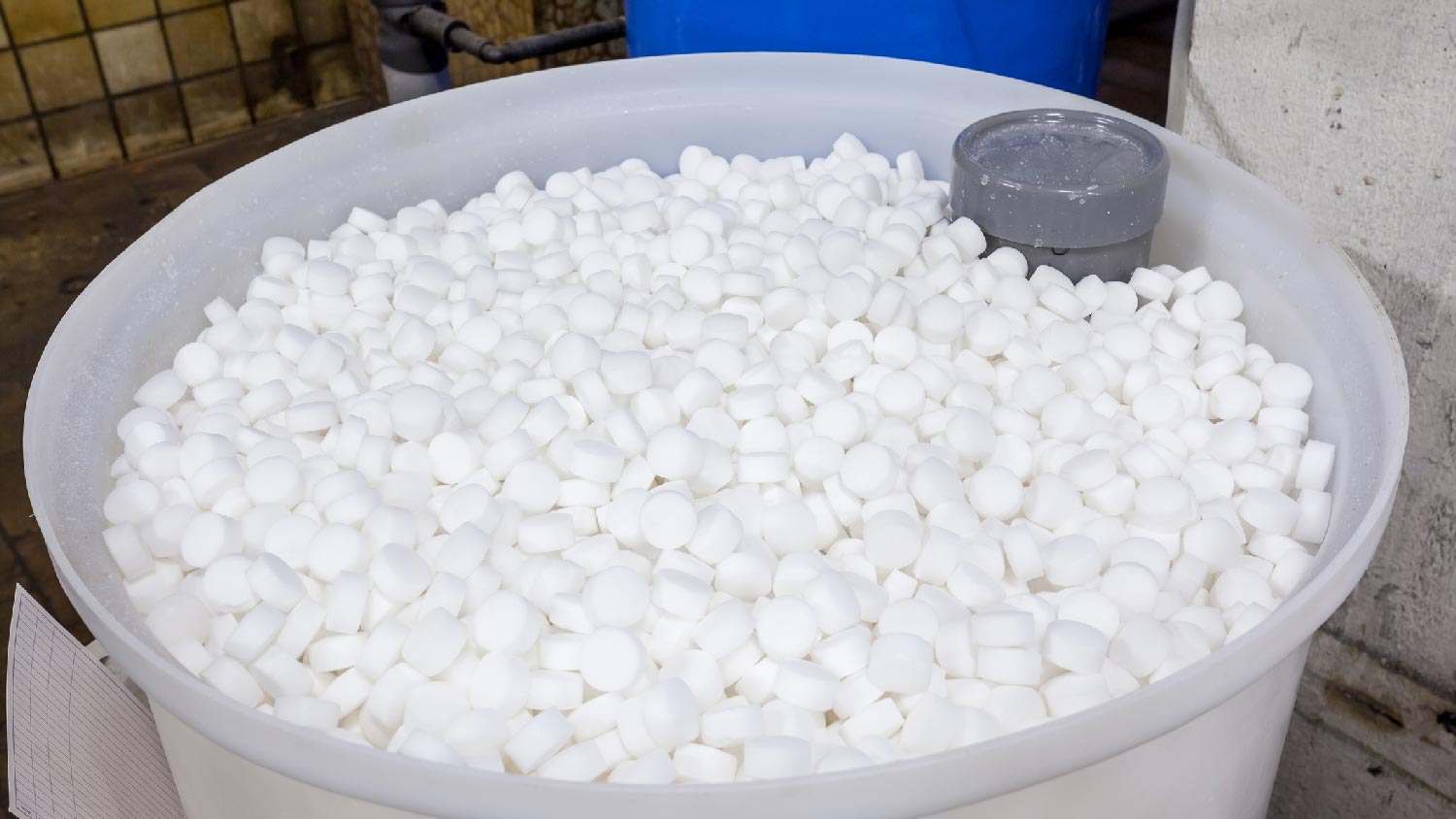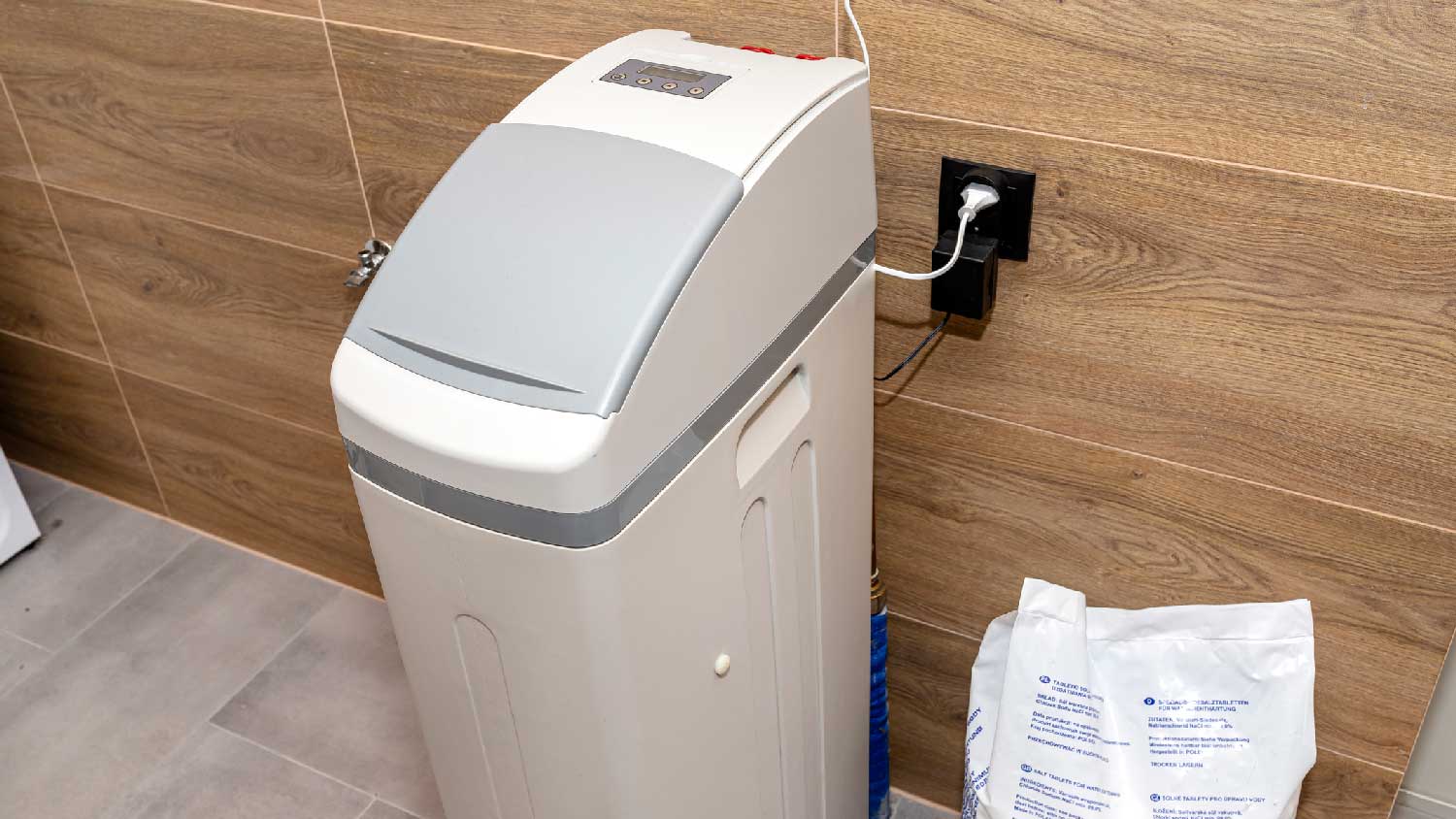Why Is My Water Softener Leaking? 8 Common Reasons
Stop a pesky leak before it becomes a big mess


Bypass valve O-rings more than 15 or 20 years old can wear out and cause a leak.
Excess salt can cause clogs, so keep salt at least 6 inches from the top of the brine tank.
Replacing a cracked or broken brine tank costs $125 to $700.
Resin tanks can leak after 10 to 15 years, and this may mean it’s time for a new water softener.
Many homes deal with hard water, which has high mineral content that can lead to buildup in your plumbing and appliances. Plus, hard water can dry out your skin and hair, causing some discomfort. Water softeners help remove excess minerals, making the water “soft.” So when you notice your water softener leaking, you may worry that minerals will start building up in your pipes, not to mention that the leak will cause water damage.
If you notice the water softener leaking, shut off the power and water supply to the water softener, then start looking for the cause. Here are eight of the most common problems that can cause a water softener to leak.
1. The Water Softener Bypass Valve Is Faulty
A water softener’s bypass valve allows water to go through to the water softener, or it can switch on to direct the water past the water softener through your home’s pipes. You may need to utilize this function when inspecting or repairing your water softener so that you can make a fix without shutting off water to the entire house.
There are a few things that can go wrong with the bypass valve that can lead to the water softener leaking. One of the main issues with a bypass valve is the O-ring, which can wear out with age or lack of maintenance. You need to lubricate the O-ring as part of regular water softener maintenance. Otherwise, the ring can crack and cause a leak. O-rings last 15 to 20 years, and after that time, they’re at risk of causing a leak and need to be replaced.
The bypass valve itself can also crack or break, causing a leak. Repairing or replacing the bypass valve, including old or cracked o-rings, requires expert skills and special tools, so call in a pro if you suspect a faulty bypass valve.
2. There’s a Problem With a Seal
The water softener system in your home is made up of several parts, many of which include seals and gaskets designed to prevent leaks. Of course, seals can wear out over time, and temperature fluctuations can cause seals to become brittle, leading to cracks. If you attempt to replace a seal or make other repairs without the help of a pro, you also risk damaging the seals.
If there’s a water softener leak because of a seal problem, hire a water softener expert to replace the seal as soon as possible.
3. The Water Softener Is Clogged
While your water softener won’t get clogged with food debris or soap buildup, it can get clogged by salt from the brine tank. The brine tank holds salt and water, creating a brine, which is used to flush out concentrated minerals that were removed from the hard water in the water softener’s resin tank. However, the brine tank can end up with too much salt or salt buildup. This can happen if someone adds in too much salt or there are big changes in temperature or humidity.
If you’re careful, you can use a broom or other long tool to carefully break up the salt buildup in the brine tank. However, you don’t want to slip and accidentally hit another part of the water softener, so it’s always safest to leave this job to a pro.
To prevent adding too much salt, keep the brine tank filled with at least 25% salt and no more than 6 inches from the top of the brine tank. Follow your water softener manual for the best guidance on how much salt to use.
4. The Rotor Valve Is Cracked

If you notice the water softener leaking from the top of the unit, it could be because of a cracked rotor valve. The rotor valve is what allows the hard water to flow into the water softener to begin with. But the rotor valve can crack over time from general wear and tear, or the seal can crack and cause a leak.
Like with the bypass valve, you'll need a pro to inspect and replace a cracked rotor valve or seal. Water softener repair costs $125 to $700.
5. You Have a Loose Hose Connection
The water softener has hoses that allow hard water to flow into the system and softened water to flow back out, and these hoses are connected at the top of the water softener. But if the connections are loose, they can cause a leak.
If you notice water leaking from around the hose connections, use a wrench to carefully tighten up the hose connections. If that stops the leak, you’re all set. If the leak continues, it may be coming from a crack or kink in the hose itself. In this case, call a pro to come replace the hose.
6. There’s a Crack in the Brine Tank
Problems like a cracked rotor valve or a loose hose connection can cause leaks at the top of the water softener, but what if you notice the water softener leaking from the bottom? When this happens, it’s most likely a puncture or crack in the brine tank. If you try to break apart a salt clog and accidentally hit the brine tank, it can cause a puncture and a leak.
Unfortunately, if you have a damaged brine tank, you’ll have to call a local water softener company to replace the entire tank.
7. You Have an Overflow Problem

There are a couple of issues that can cause overflow. The brine tank may start overflowing if the float valve of the water softener isn’t in its normal position or if you’ve accidentally added too much salt.
If you’ve added too much salt, it can build up inside the tank. You may need to break apart any buildup. However, this can cause the water in your home to become salty. It’s best to have a pro inspect the brine tank and offer solutions. To fix a faulty float valve, try placing it back in its correct position inside a tube along the side of the brine tank. If putting it back in its spot doesn’t fix the overflow, it’s time to call in the pros.
8. You Need a New Resin Tank
The resin tank is where the minerals in the water are removed through ion transfer. A resin tank lasts 10 to 15 years, but it can crack or break on an older water softener. Like a cracked brine tank, an old resin tank causes water to leak from the bottom of the water softener.
If a worn-out resin tank is the culprit of your leaking water softener, hire a pro to come replace the tank. Because the resin tank is designed to last as long as the life span of the water softener system, a leaking resin tank may also be a sign that you need to replace your entire water softener.
What to Do When Your Water Softener Is Leaking
If you notice your water softener leaking, make sure to first disconnect the water softener from its power supply, then from the water supply. Then, you or a pro can start inspecting for the cause of the leak. Some water softener repairs, like tightening a loose hose or placing a misaligned float valve back into its normal position, are easy to handle with a few simple tools.
However, it’s best to leave most water softener repairs to a professional because if you make even a small mistake or don’t resolve the problem quickly, it can lead to water damage in your home. Then, you’ll be stuck not only paying for water softener repairs or replacement but also repairs to drywall, floors, subfloors, and more.
Instead, call a vetted water softener specialist. They can quickly identify and resolve the issue and get your water softener system back up and running.





- What Is a Water Softener and Is It Right for Your Home?
- What Is Water Softener Salt? Cost, Types, and Everything You Need to Know
- Is Your Water Softener Turning Water Gray? 6 Possible Causes and How to Stop It
- Softened Water Tastes Salty: Common Reasons
- 6 Signs Your Water Heater Might Explode
- Can You Use Water if the Water Heater Is Leaking?
- 10 Most Common Plumbing Problems Every Homeowner Should Know
- What’s the Difference Between Hard Water and Soft Water?
- Do Descalers Work or Do You Actually Need a Water Softener?
- Do You Have Hard or Soft Water? Sneaky Signs to Look Out For










